
|
CP's Equipment
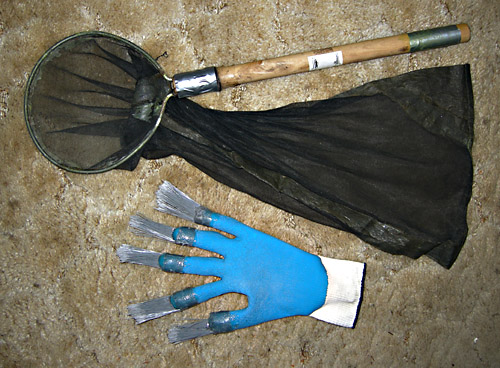
net and glove
Home-made net and "brush
glove" used for algae washes.
|
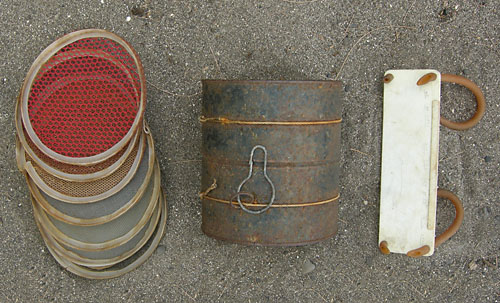
sieves and dive slate
Home-made sieves and
arm-mounted dive slate used for sand samples (the coffee can slips
around the dive slate while swimming out).
|
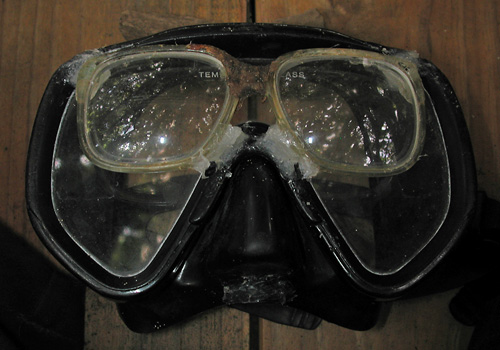
external lens mount for mask
Dive mask modified
with externally mounted prescription lenses.
|

goggles
Goggles with
prescription lenses glued to the outside, the plastic front removed and
removable, cut-down reading lenses inserted on the inside.
These have been my standard goggles for decades but only allow for good
distant or good close-up vision during a given float, not both.
|
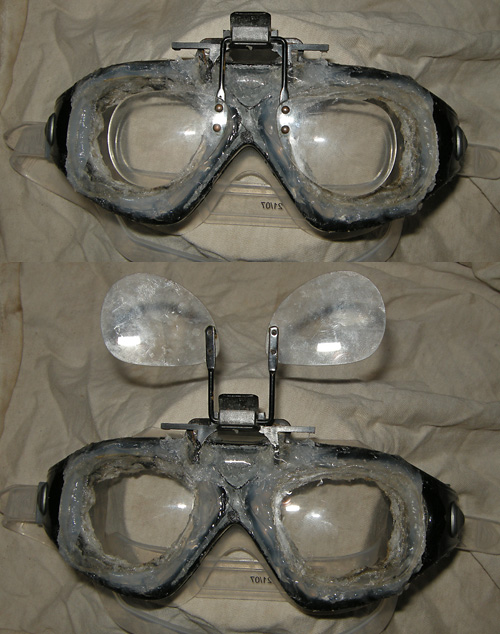
experimental goggles
Experimental goggles with
prescription lenses glued on and flip-up reading lenses attached for
close work. Update: So far, I've failed to get a good seal with these...
|
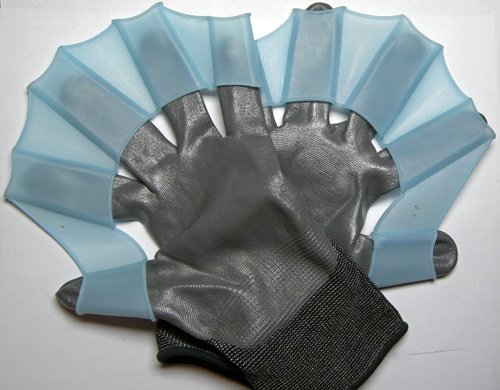
experimental webbing
Low-cost silicone "webs" for more power in arm stroke. They work best without gloves,
providing moderate protection will leaving all fingertips free.
|
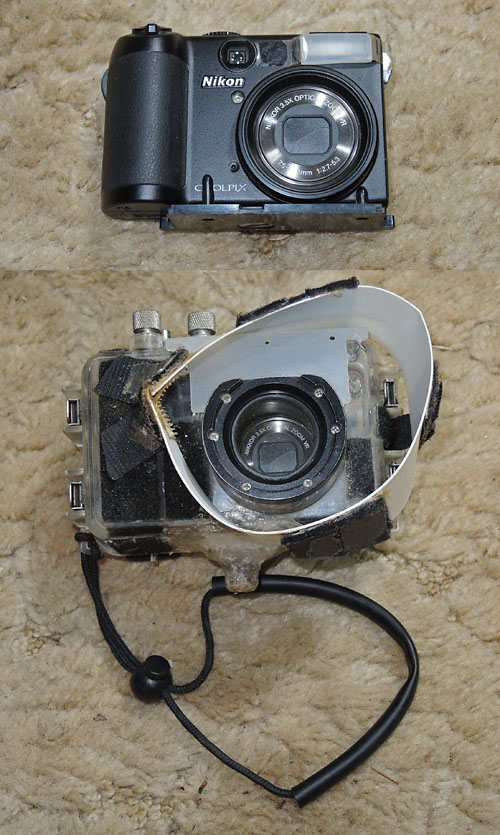
underwater camera gear
Primary underwater camera
gear: Nikon P5100 in a Fantasea housing with an internal
diffuser over the flash, an external diffuser and a reflection collar
(allows use without strobes). Typical macro settings: manual, ISO 64,
shutter 1/2000, F 7.6, WB "cloudy," spot metering, flash compensation - 0.3. Nearly all photos shot with flash.
|
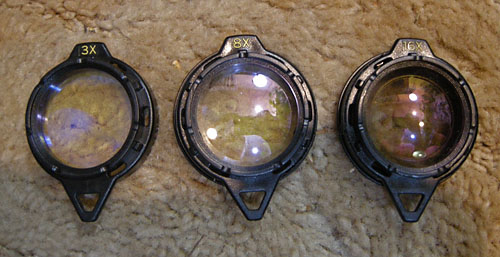
wet diopters
A set of wet diopters for
use with the Fantasea housing. I found it too difficult to "hold
position" while using them so have only done so a few times.
|
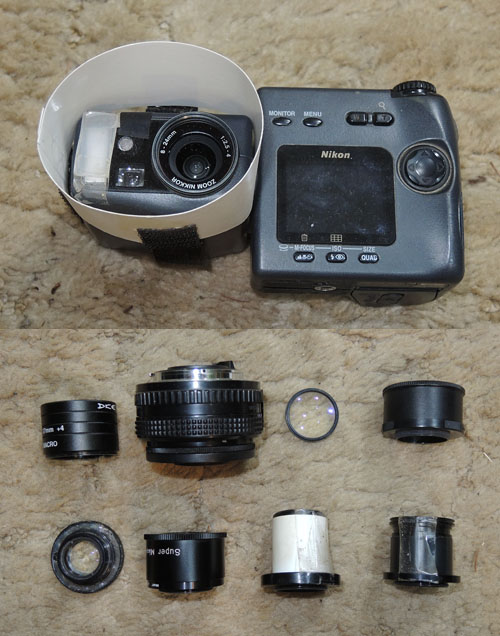
camera gear
| Primary camera gear for
"table" shots: Nikon CP990 with a diffuser over the flash and a
reflection collar
(allows use without slave flashes). Also,
various small lenses (stack of simple diopters, reversed 50 mm lens,
low power Lomo reticle lens, Raynox MSN-202, high power Lomo reticle
lens, Raynox MSN-500, reversed 15x microscope ocular, reversed 20x
microscope ocular) for additional magnification. Typical macro settings
without add-on lenses: manual, ISO 100, shutter 1/1000, F 9.1, WB "speed
light," spot metering, flash intensity adjusted as needed with
"variable power" function. Typical macro settings with add-on lenses:
same but with camera at full telephoto and F 11.1. Nearly all photos
shot with flash.
|
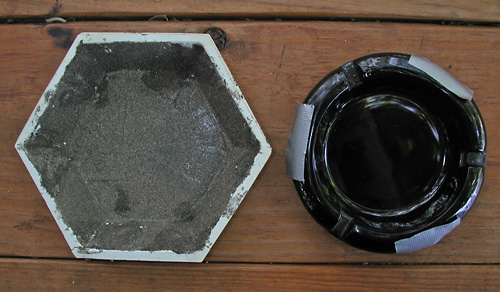
photo backgrounds
Primary backgrounds used for "table" shots: a plastic balance pan coated with aquarium
sealant and dusted with screened sand; a black-glass "casino" ashtray.
|
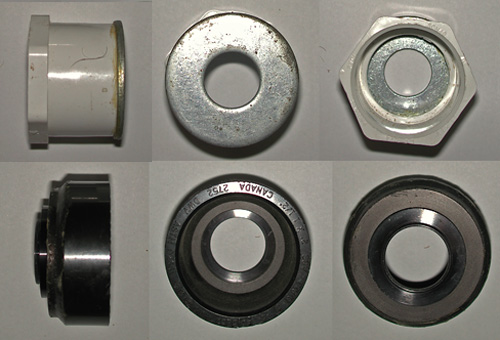
home made slide scanners
Home made attachments for
scanning slides with CP990: The bottom one attaches to the camera
with 28-37 and 37-52 mm step-up rings glued to a piece of PVC pipe. A
slide held against the open end is placed at the optimum distance for
macro. The top one is a piece of PVC pipe of the right length to fit
over the barrel of the Raynox MSN-500. A slide held against the
open end (restricted by a glued-on washer) is at the optimum distance
for macro with that lens. The former allows scanning whole slides and
down to about 5 mm in image width. The latter allows scanning down to
about 1 mm in image width.
|

latest microscope
Latest microscope: an
approximately $200 "student scope" (OM24L 20x/40x from microscope.com
with 10x oculars). The inbuilt lighting is stripped out--also the
various clamps on the stage, the outer housing around the objectives and
the upper portion of the eye cups. The base is weighted for stability.
It's supplemented with three Barlow lenses (0.3, 0.5, & 2.0)
attached with glue and step up/down rings so that they're
removable/stackable. Also, with two sets of additional oculars (5x and
20x) and a 10x reticle. A removable, homemade platform allows the scope
to be used as a vertical focus rail when working with a camera mounted
on a tripod/copy stand. Both sets of spare oculars, one of the Barlow
lenses, the reticle and the specimen platform were "inherited" from the previous
(defunct) scope.
|
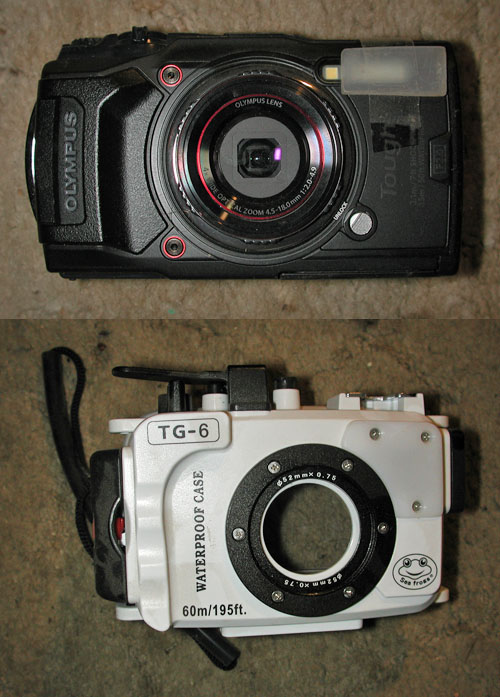
new camera for 2022 season
| New camera: an Olympus TG-6
with Sea Frogs housing (reflection collar not yet installed). Update:
I'm still experimenting but, so far, I think my old Nikon P5100 produces
better photos that the TG-6. The latter yields some good results but is
inconsistent (though that could still be my fault...). Nearly all
photos shot with flash using "microscope" or aperture priority settings
in one combination or another...
|

protective gear
| I almost always wear cheap
garden gloves, knee pads and/or tennis shoes while diving, snorkeling, wading or
working the intertidal. It greatly reduces the number
of minor scrapes and cuts... |
|













